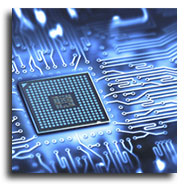
[awsqf-form id=5964]
[awsqf-form id=5964]
[awsqf-form id=5964]
Noticias ordenadas por meses
- December 2025 (1)
- November 2025 (1)
- September 2025 (5)
- July 2025 (3)
- June 2025 (1)
- May 2025 (1)
- March 2025 (1)
- January 2025 (2)
- December 2024 (1)
- October 2024 (7)
- September 2024 (1)
- July 2024 (2)
- May 2024 (2)
- April 2024 (5)
- February 2024 (3)
- January 2024 (1)
- November 2023 (5)
- August 2023 (3)
- June 2023 (1)
- May 2023 (2)
- April 2023 (2)
- March 2023 (1)
- February 2023 (2)
- December 2022 (1)
- November 2022 (2)
- September 2022 (1)
- July 2022 (5)
- May 2022 (1)
- April 2022 (1)
- February 2022 (4)
- December 2021 (5)
- October 2021 (1)
- September 2021 (1)
- August 2021 (1)
- July 2021 (6)
- June 2021 (6)
- May 2021 (1)
- April 2021 (2)
- March 2021 (5)
- February 2021 (6)
- December 2020 (1)
- November 2020 (1)
- September 2020 (2)
- June 2020 (2)
- May 2020 (2)
- March 2020 (1)
- January 2020 (2)
- October 2019 (4)
- September 2019 (2)
- April 2019 (1)
- March 2019 (1)
- February 2019 (2)
- December 2018 (8)
- November 2018 (1)
- August 2018 (1)
- April 2018 (2)
- February 2018 (1)
- November 2017 (1)
- September 2017 (1)
- July 2017 (1)
- April 2017 (2)
- February 2017 (1)
- December 2016 (3)
- November 2016 (3)
- April 2016 (1)
- March 2016 (5)
- February 2016 (3)
- December 2015 (1)
- November 2015 (1)
- July 2015 (4)
- June 2015 (1)
- May 2015 (14)
- April 2015 (8)
- March 2015 (11)
- February 2015 (1)
- November 2014 (3)
- October 2014 (2)
- September 2014 (1)
- November 2010 (2)
- July 2009 (1)
- November 2008 (1)
- November 2002 (1)
